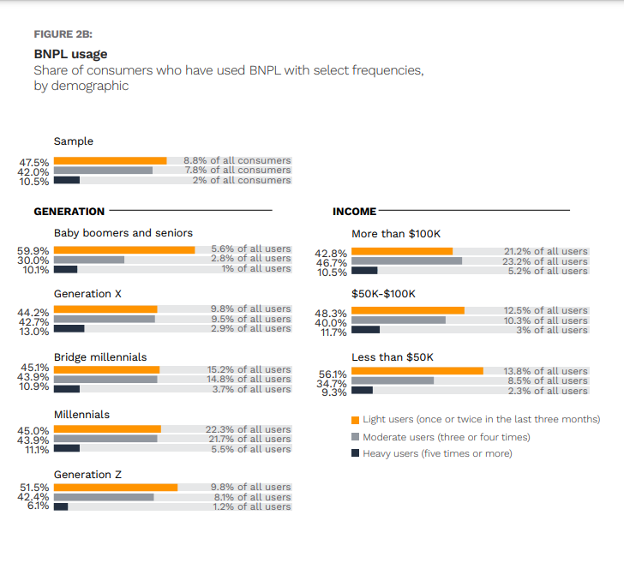
The latest reading on consumer sentiment signals that high-income consumers may embrace a few strategies to deal with concerns over inflation and dwindling stock portfolios.
Tactics include cutting back, trading down — and perhaps embracing buy now, pay later as the tool that helps them get through a (prolonged) rough patch.
In the most recent University of Michigan survey of consumer sentiment, October’s data revealed a decline, as individuals displayed a heightened level of concern about prices, business conditions and the state of their personal finances.
“This decline was driven in large part by higher-income consumers and those with sizable stock holdings, consistent with recent weakness in equity markets,” the university’s Surveys of Consumers Director Joanne Hsu noted. The overall index tied to sentiment was 63.8, down 6% from September.
Across all consumers, one-year expected business conditions plunged 16%, and expectations over consumers’ own personal finances in the year ahead fell 8%, Hsu said, “reflecting ongoing concerns about inflation and, to a lesser degree, uncertainty over the implications of negative news both domestically and abroad.”
Looking at inflation, consumers expect to see prices rise by 4.2% in the next year, which is up from 3.2% in September over the same year-ahead timeframe. PYMNTS has reported through the year that consumers don’t expect inflation to be tamed until well towards the end of 2024.
Consumers, then, are decidedly less than sanguine about what lies ahead.
Friday’s (Oct. 27) economic data from the Commerce Department on spending shows evidence that although overall consumers were willing to buy more — the data showed 0.7% growth in personal consumption expenditures — some categories showed declines.
As noted by Bloomberg, some durable goods spending on big-ticket items, such as washing machines, have been pressured.
The latest data from the Commerce Department shows that spending on items such as major household appliances barely budged in September. PYMNTS Intelligence data from January illuminated consumer reluctance to open wallets for big-ticket items such as new vehicles — that reluctance is now evident.
Amazon’s results on Thursday (Oct. 26) gave further tailwind to the argument that consumers are weighing prices, and trading down where possible.
Separate PYMNTS data, in collaboration with AWS, has found that at least as 40% of high-income consumers (those earning at least $100,000 annually) have used BNPL at least a few times a month, as seen in the chart below.

The logic follows, then, that if individuals expect inflation to be higher in the year ahead, and they are worried about exogenous shocks to things like stock market wealth, they may spread payments out over time, and would use the cash on hand that’s available in their bank accounts to get the goods and services they need, even if they are trading down.